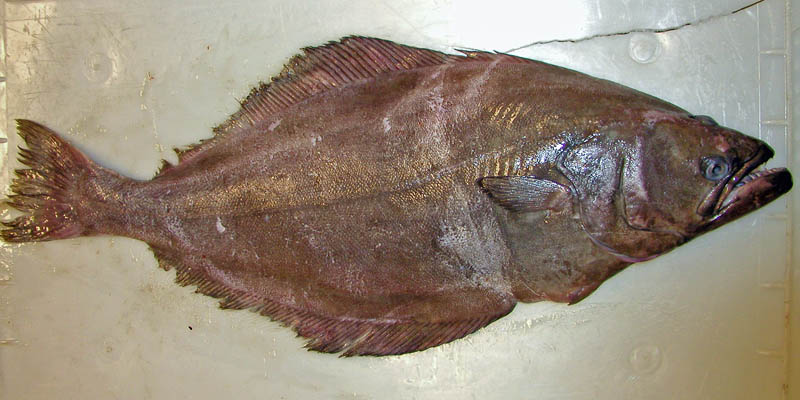The development of offshore fishery for Greenland halibut is sustainable Published 08.09.2021

The fishery for Greenland halibut (Reinhardtius hippoglossoides) in waters offshore of West Greenland appears to be sustainable at present. That is the conclusion off a recently published scientific article in the ICES Journal of Marine Science (https://doi.org/10.1093/icesjms/fsab166). Researchers from Greenland, Greenland Institute of Natural Resources (GINR), and Spain, University of Vigo, and USA, National Marine Fisheries Service had analyzed research survey data over the past 22 years in the mentioned offshore sea area, an important fishing ground of Greenland halibut, to understand the effects of both climate and fishing pressure on stocks of bottom-dwelling (demersal) fish species.
However, the researchers also found out that changes had happen in Greenland halibut preferred habitats. In the beginning of the offshore fishery, Greenland halibut preferred habitats were in the deeper areas, but in the last two decades the Greenland halibut had become more common in shallower and mid-depth waters.
The study includes data on 156 fish species caught during GINR’s annual Greenland halibut surveys off West Greenland from 1997 to 2019. Data were compared across ecosystem zones in depth areas defined as shallow (400-800 m), medium deep (800-1200 m) and deep (1200-1500 m). Bottom temperatures were used as expressions of climate, while data on commercial catches of Greenland halibut (number of fishing hours and weight of catch) were used as expressions of fishing pressure.
Bottom temperatures off West Greenland vary between periods with cold and warm water. These variations are related to variations in the global deep-water circulation, which again are related to variations in climate. By analysing temperature variations with fishing data, the researchers found a strong correlation between changes in bottom temperatures and changes in the composition of the bottom-dwelling fish communities.
The degree of structural and compositional changes in fish community structure due to temperature variation depends on the depth, such that periods with warmer bottom water result in relatively large changes in the fish community in shallower waters. Warmer bottom water favours large, Atlantic (boreal) species of fish such as deepwater redfish (Sebastes mentella), cod (Gadus morhua) and American plaice (Hippoglossoides platessoides).
Interestingly, stocks of adult Greenland halibut increased over the 22-year period in shallow and medium deep water (400-1200 m), while they declined in deep water (1200 -1500 m), despite the adult halibut’s depth and temperature preferences (in West Greenland adult individuals historically have been found in the offshore waters below 800 m and their mean temperature preference has been around 3°C).
“The increasing stocks in shallow and medium deep water of deepwater redfish, which is an important food for Greenland halibut in West Greenland, and other boreal species such as cod and long rough dab may have encouraged the halibut to move out of the deep water, up into shallower water, and to stay there,” said Aitor Lekanda, Master’s student from the University of Vigo at GINR.
The researchers registered no correlation between fishing pressure and changes in the structure of fish communities.
“Over the past 30 years, catches of Greenland halibut in the sea off West Greenland have been increasing, but we have seen no noticeable effect of this on fish stocks,” said Adriana Nogueira, fisheries biologist at the GINR.
”This is good news, and it indicates that offshore fishing for Greenland Halibut is sustainable,” she added.
For further information, contact:
Researcher, Department of Fish and Shellfish, Adriana Nogueira, on telephone + 299 36 12 00 or e-mail adno@natur.gl

